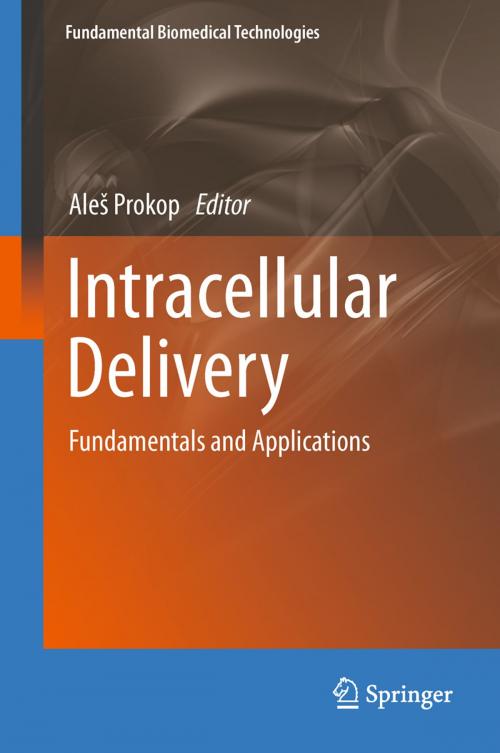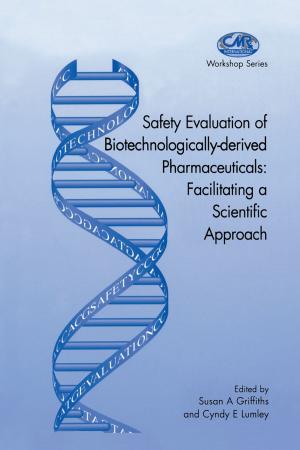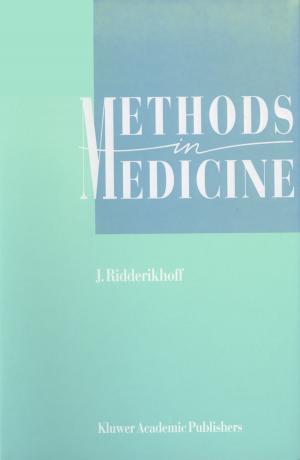Intracellular Delivery
Fundamentals and Applications
Nonfiction, Science & Nature, Science, Biological Sciences, Cytology, Other Sciences, Molecular Biology| Author: | ISBN: | 9789400712485 | |
| Publisher: | Springer Netherlands | Publication: | May 26, 2011 |
| Imprint: | Springer | Language: | English |
| Author: | |
| ISBN: | 9789400712485 |
| Publisher: | Springer Netherlands |
| Publication: | May 26, 2011 |
| Imprint: | Springer |
| Language: | English |
This book features a special subsection of Nanomedicine, an application of nanotechnology to achieve breakthroughs in healthcare. It exploits the improved and often novel physical, chemical and biological properties of materials only existent at the nanometer scale. As a consequence of small scale, nanosystems in most cases are efficiently uptaken by cells and appear to act at the intracellular level. Nanotechnology has the potential to improve diagnosis, treatment and follow-up of diseases, and includes targeted drug delivery and regenerative medicine; it creates new tools and methods that impact significantly upon existing conservative practices.
This volume is a collection of authoritative reviews. In the introductory section we define the field (intracellular delivery). Then, the fundamental routes of nanodelivery devices, cellular uptake, types of delivery devices, particularly in terms of localized cellular delivery, both for small drug molecules, macromolecular drugs and genes; at the academic and applied levels, are covered. The following section is dedicated to enhancing delivery via special targeting motifs followed by the introduction of different types of intracellular nanodelivery devices (e.g. a brief description of their chemistry) and ways of producing these different devices. Finally, we put special emphasis on particular disease states and on other biomedical applications, whilst diagnostic and sensing issues are also included.
I**ntracellular delivery / therapy is a highly topical which will stir great interest. Intracellular delivery enables much more efficient drug delivery since the impact (on different organelles and sites) is intracellular as the drug is not supplied externally within the blood stream. There is great potential for targeted delivery with improved localized delivery and efficacy.
This book features a special subsection of Nanomedicine, an application of nanotechnology to achieve breakthroughs in healthcare. It exploits the improved and often novel physical, chemical and biological properties of materials only existent at the nanometer scale. As a consequence of small scale, nanosystems in most cases are efficiently uptaken by cells and appear to act at the intracellular level. Nanotechnology has the potential to improve diagnosis, treatment and follow-up of diseases, and includes targeted drug delivery and regenerative medicine; it creates new tools and methods that impact significantly upon existing conservative practices.
This volume is a collection of authoritative reviews. In the introductory section we define the field (intracellular delivery). Then, the fundamental routes of nanodelivery devices, cellular uptake, types of delivery devices, particularly in terms of localized cellular delivery, both for small drug molecules, macromolecular drugs and genes; at the academic and applied levels, are covered. The following section is dedicated to enhancing delivery via special targeting motifs followed by the introduction of different types of intracellular nanodelivery devices (e.g. a brief description of their chemistry) and ways of producing these different devices. Finally, we put special emphasis on particular disease states and on other biomedical applications, whilst diagnostic and sensing issues are also included.
I**ntracellular delivery / therapy is a highly topical which will stir great interest. Intracellular delivery enables much more efficient drug delivery since the impact (on different organelles and sites) is intracellular as the drug is not supplied externally within the blood stream. There is great potential for targeted delivery with improved localized delivery and efficacy.















